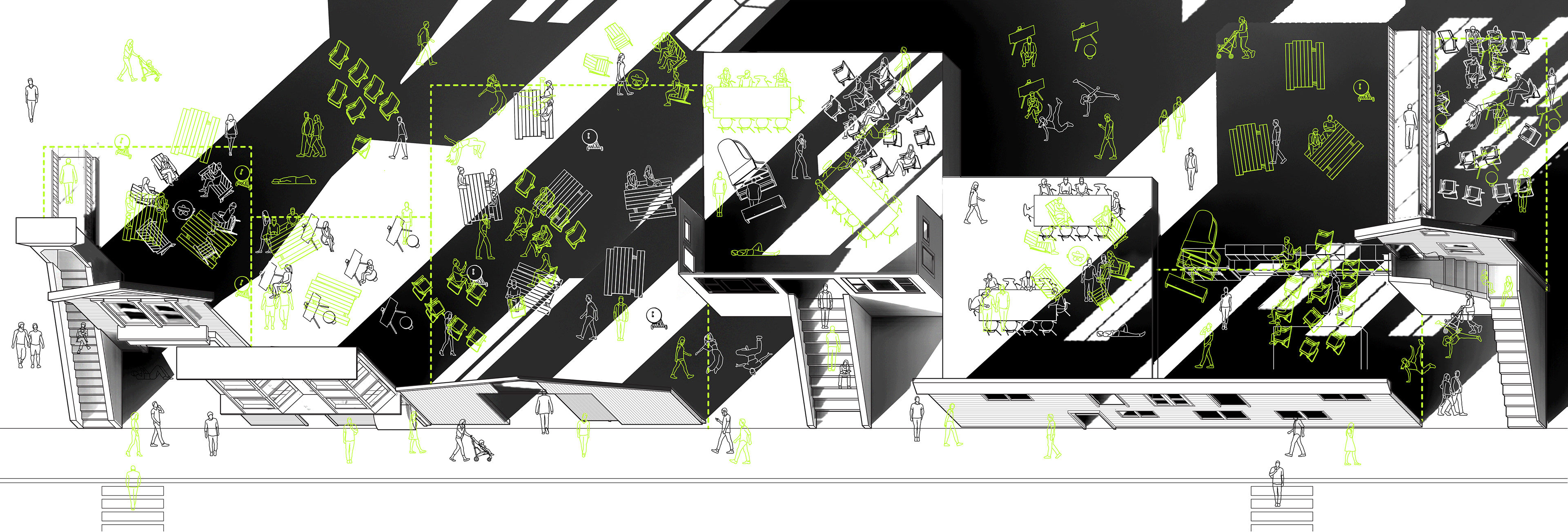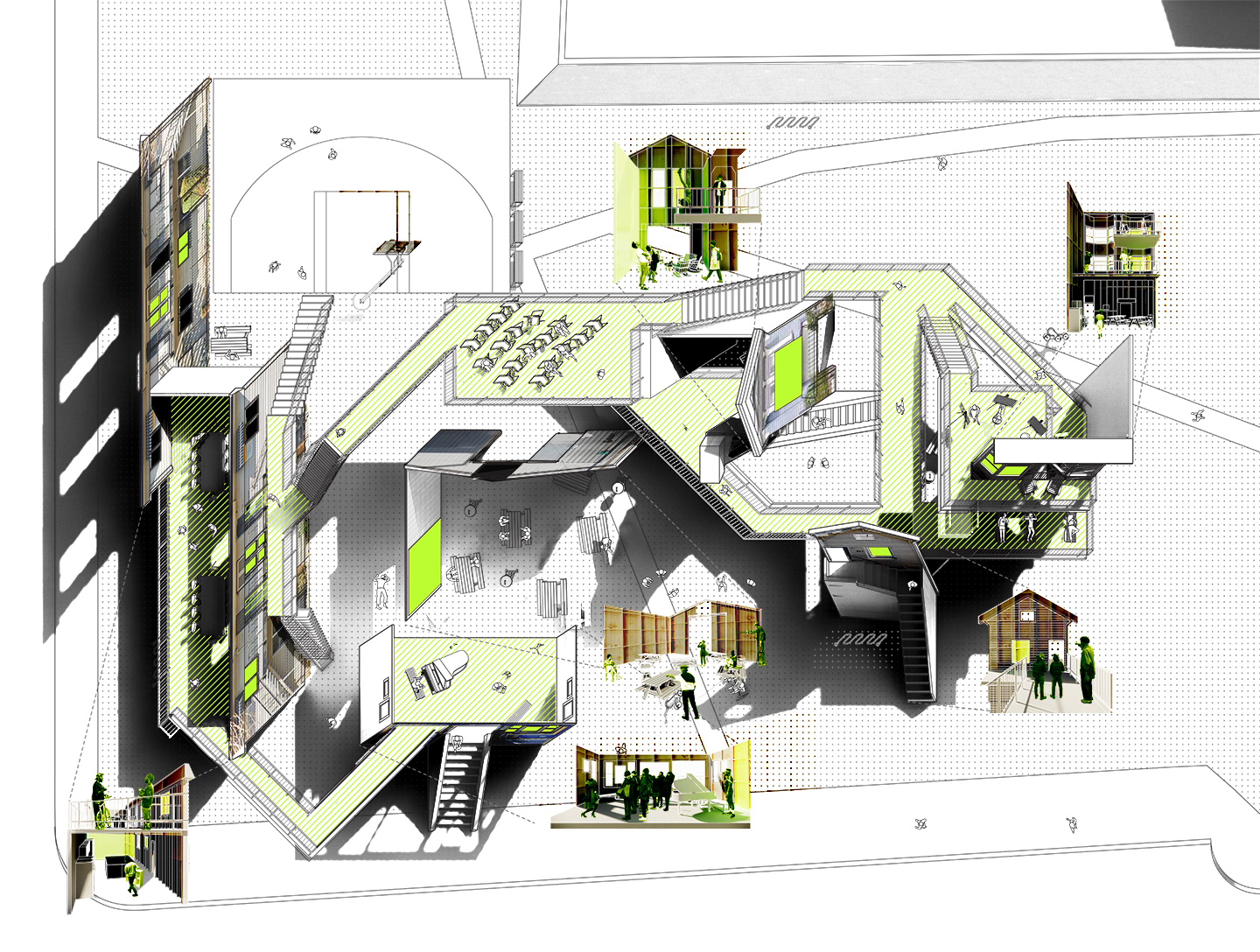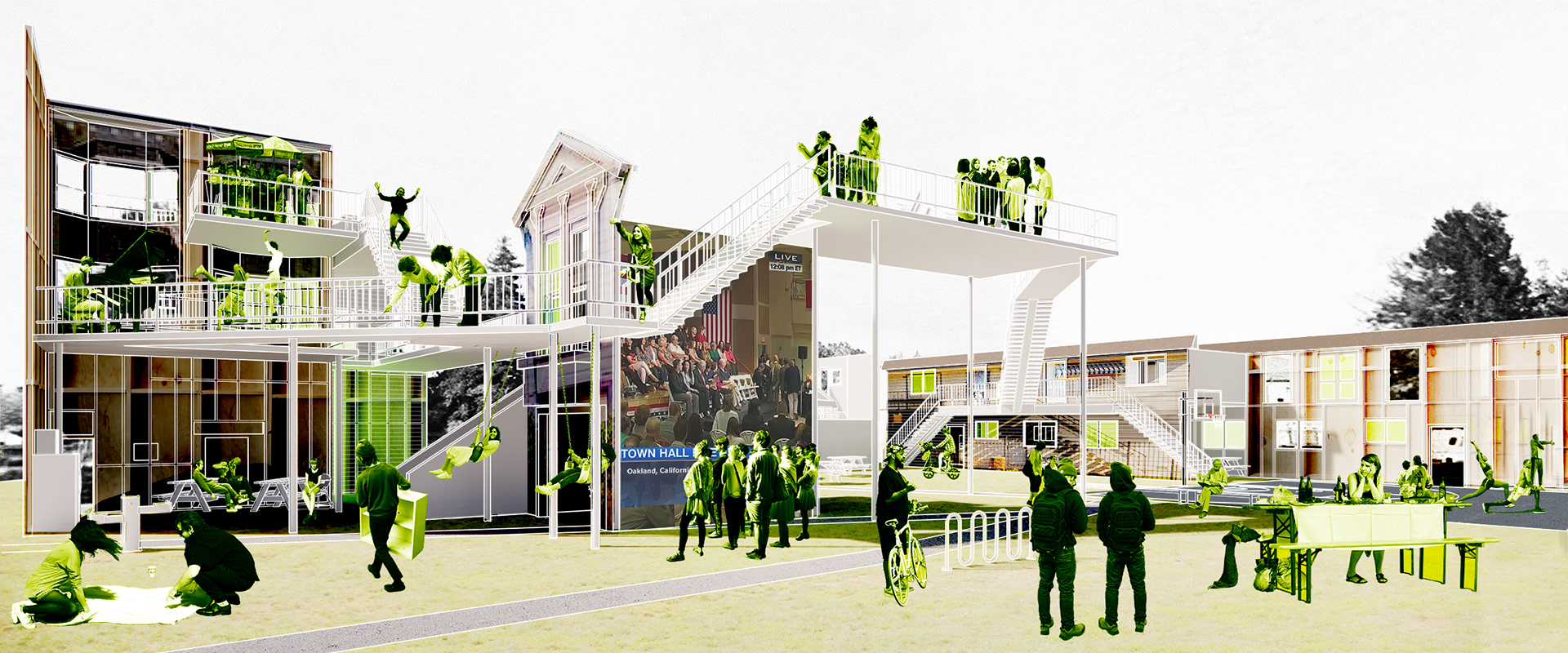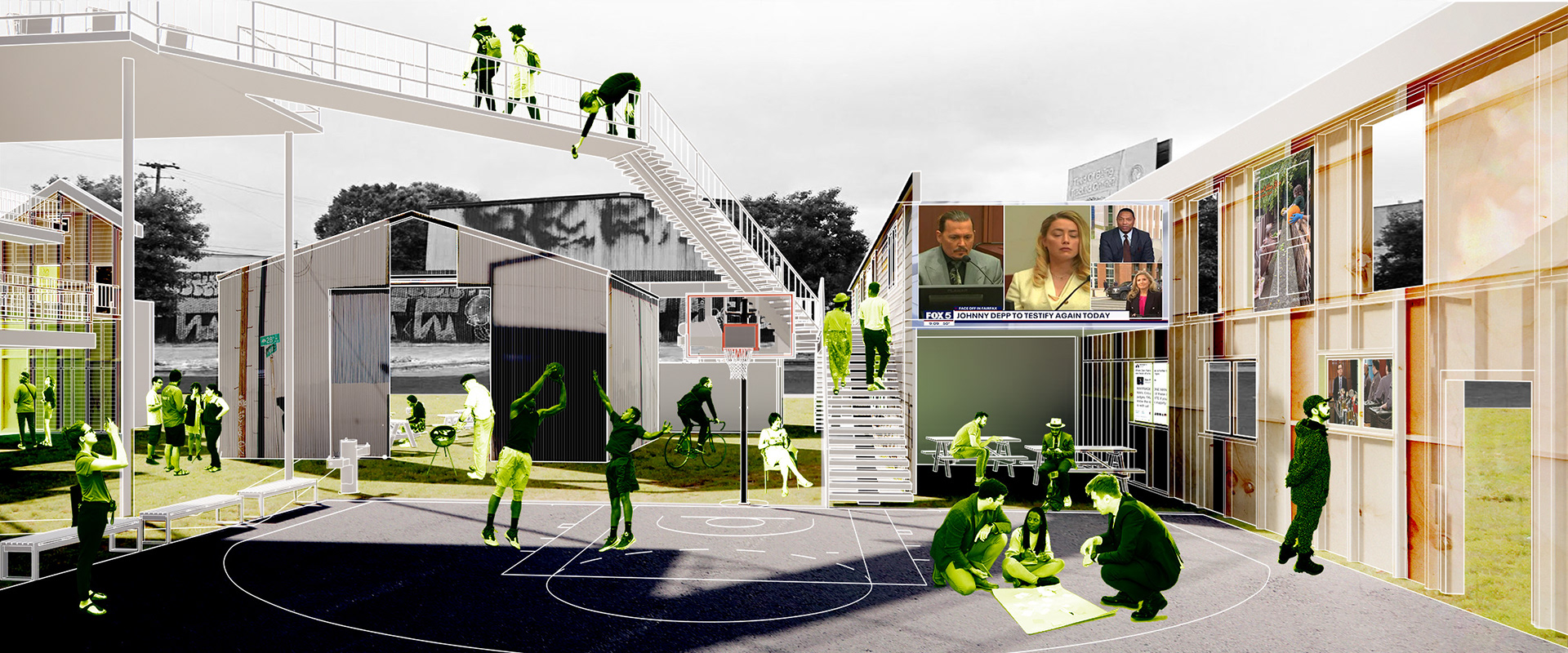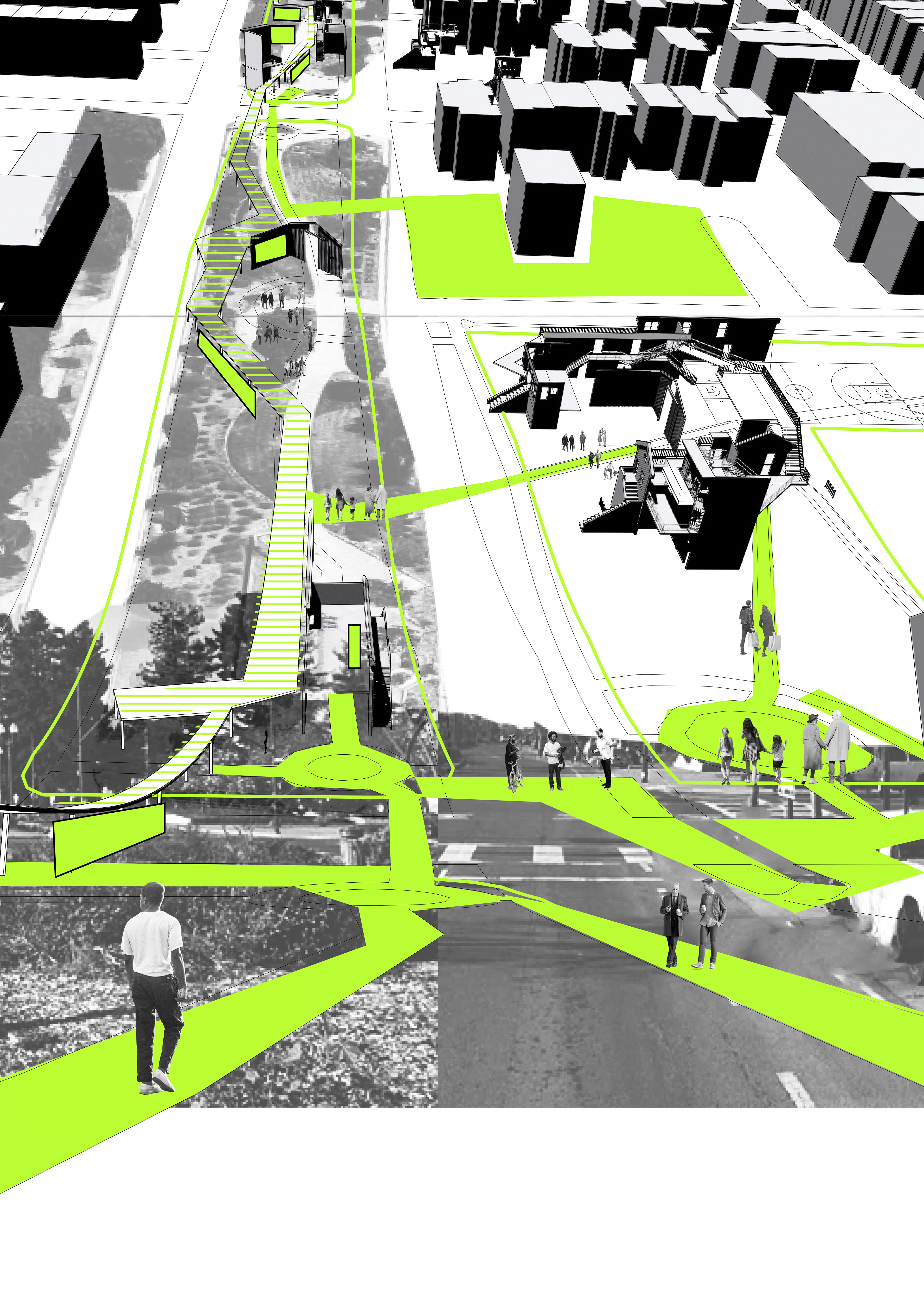view our preliminary research here..
the public spaces we encounter in our everyday lives are not designed for us. the public realm is an assemblage of the hegemonic order: architecture of consensus, the false perception of an agreed upon public will. it’s often designed with good intentions but fosters exclusion and represses democracy. how can we challenge the conventional approach to designing public space through a new vernacular typology that supports a plural and agonistic public of dissent and discourse?
seeing vernacular as the architectural semiotic system through which we understand our position in space, we propose a new form of hyperlocal vernacular that can facilitate face-to-face discourse as the way through which we mediate our relationship with the public space, one another, and the media.
the plurivernacular will support rhetoric through assemblages of familiar architectural elements to point out the impropriety of the universality of public space as it exists today, and invoke agora-like spaces that recharge communities and public spaces with dissent and discourse. the plurivernacular is not a project that aims to solve every problem that takes place in urban public space. in fact, it
is a critique of that fact that often, architects and architecture can and will fail in their attempts to do so.
is a critique of that fact that often, architects and architecture can and will fail in their attempts to do so.
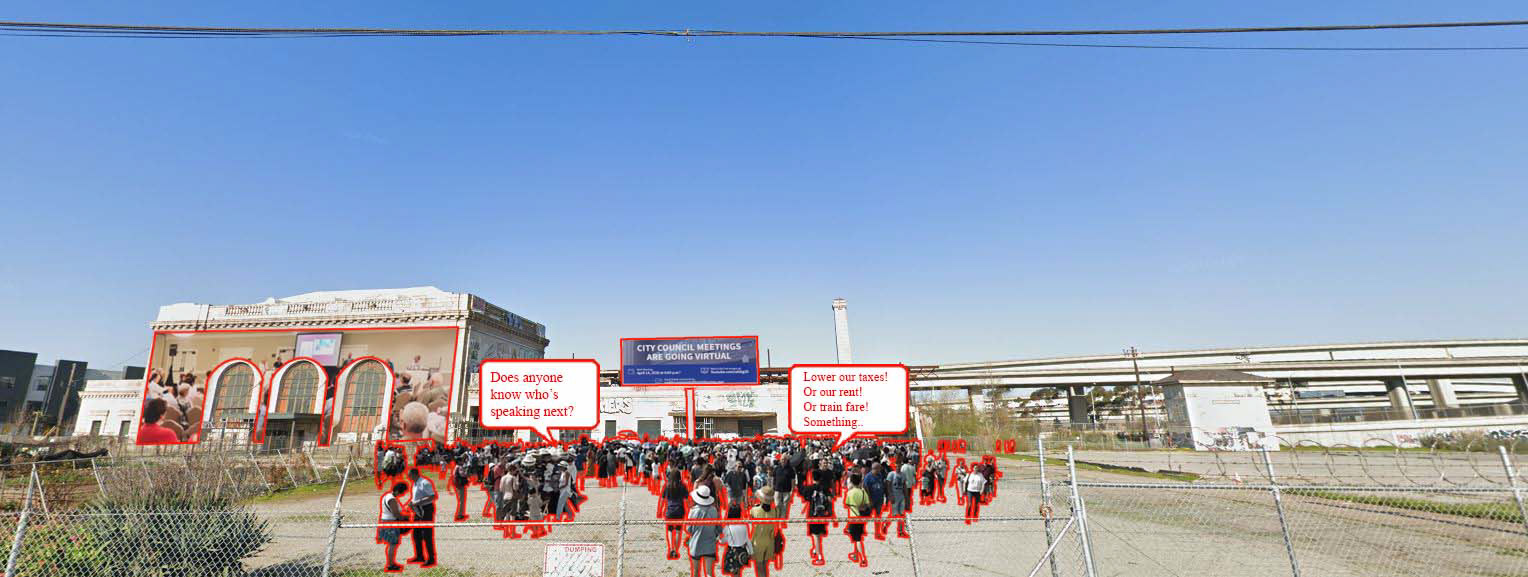
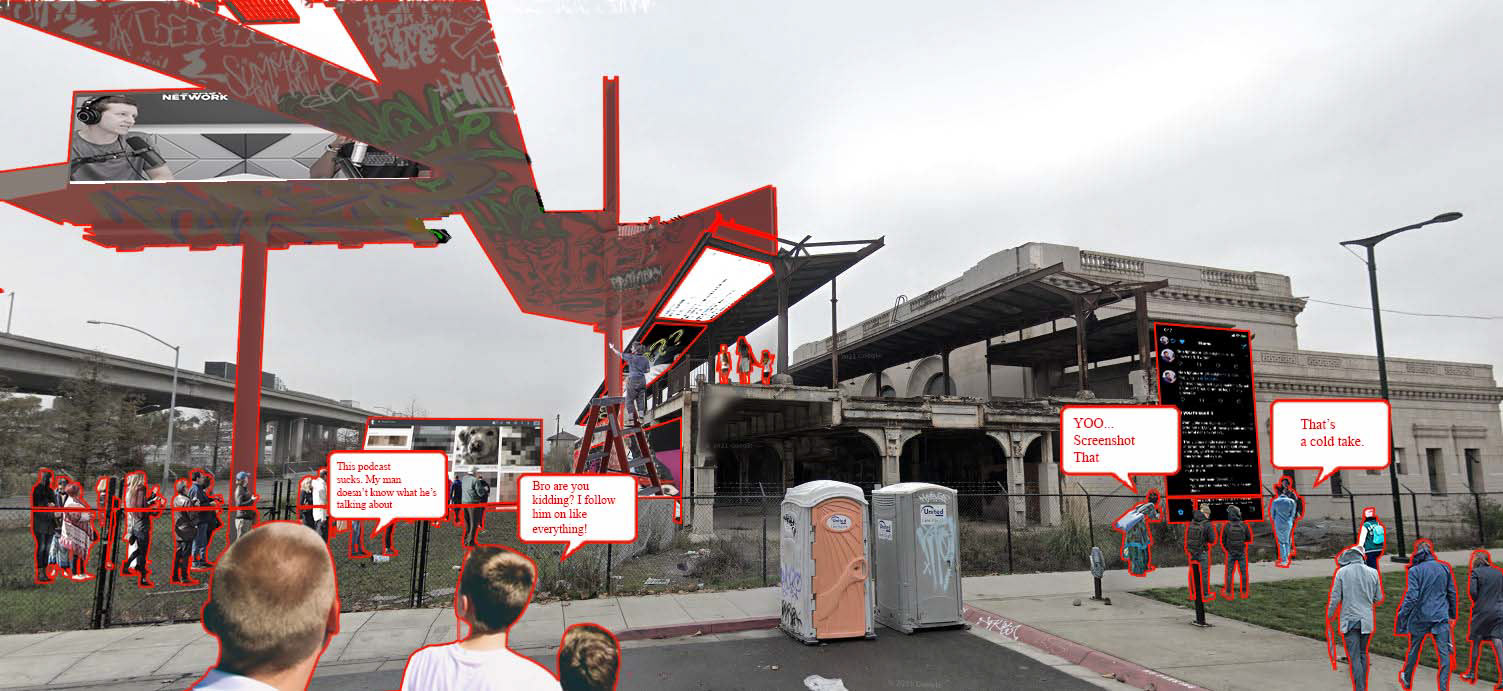
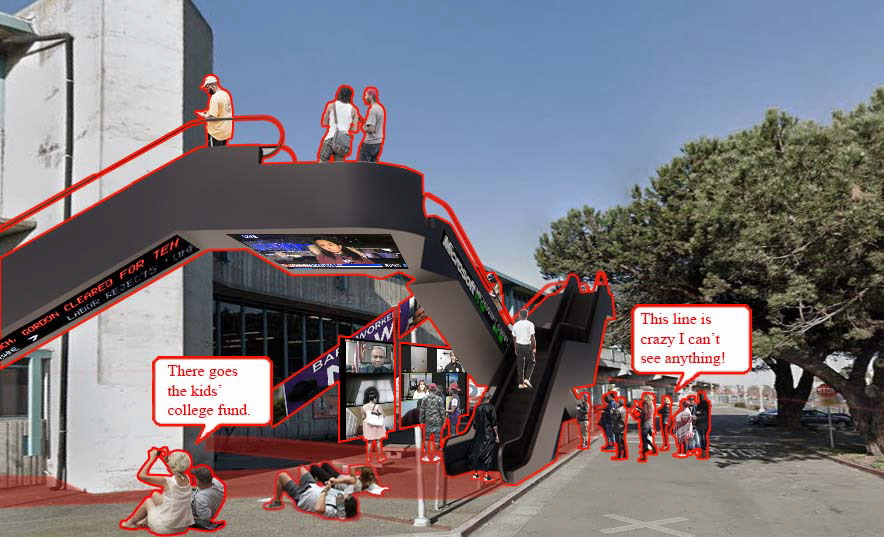
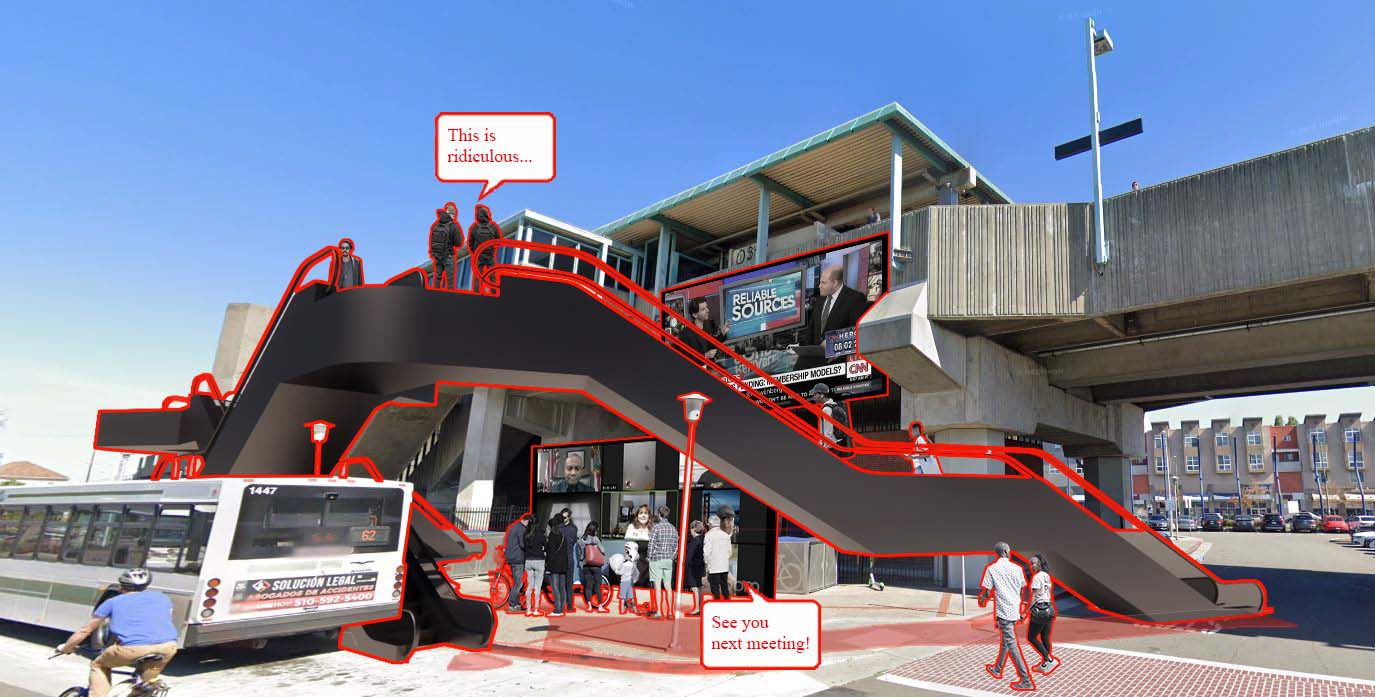
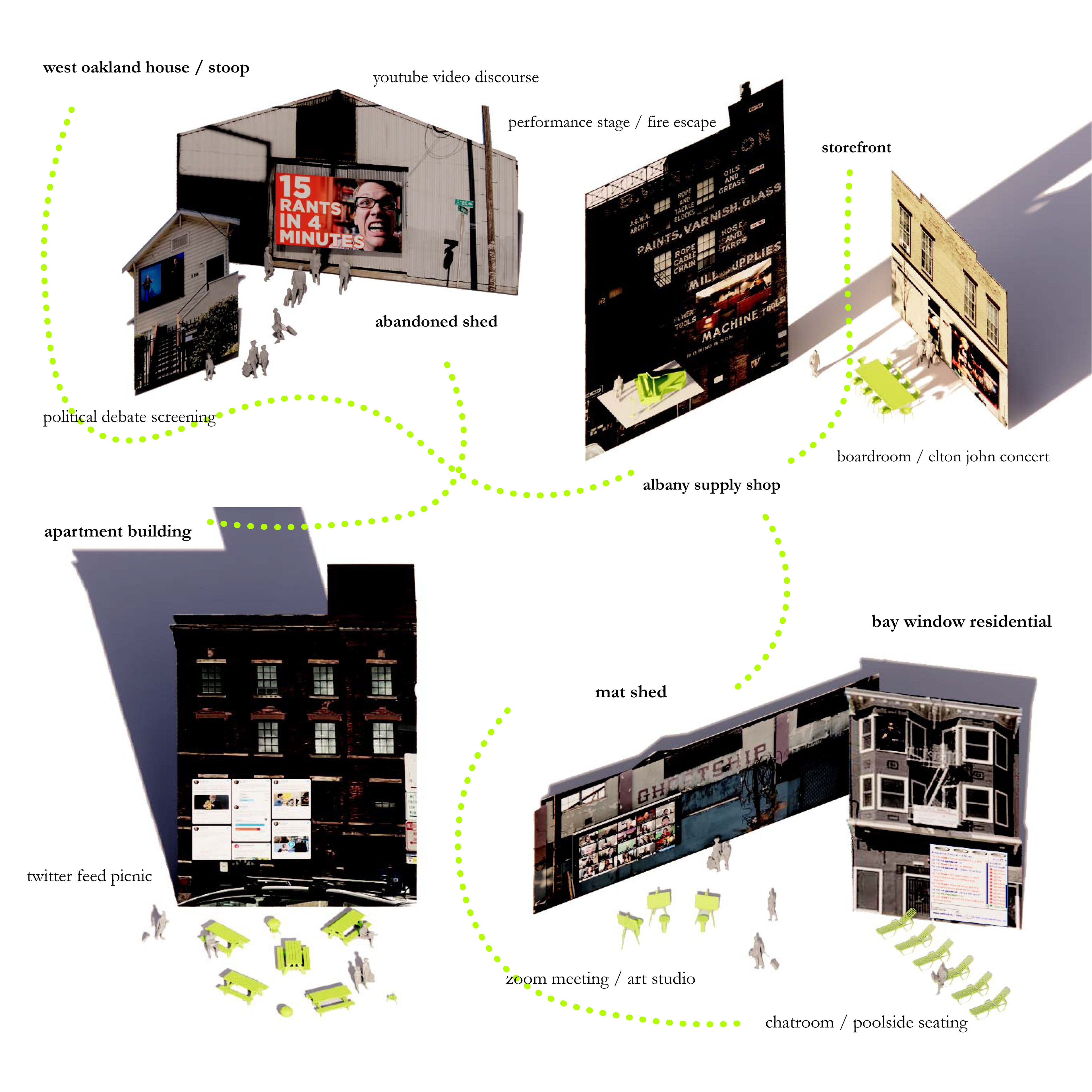
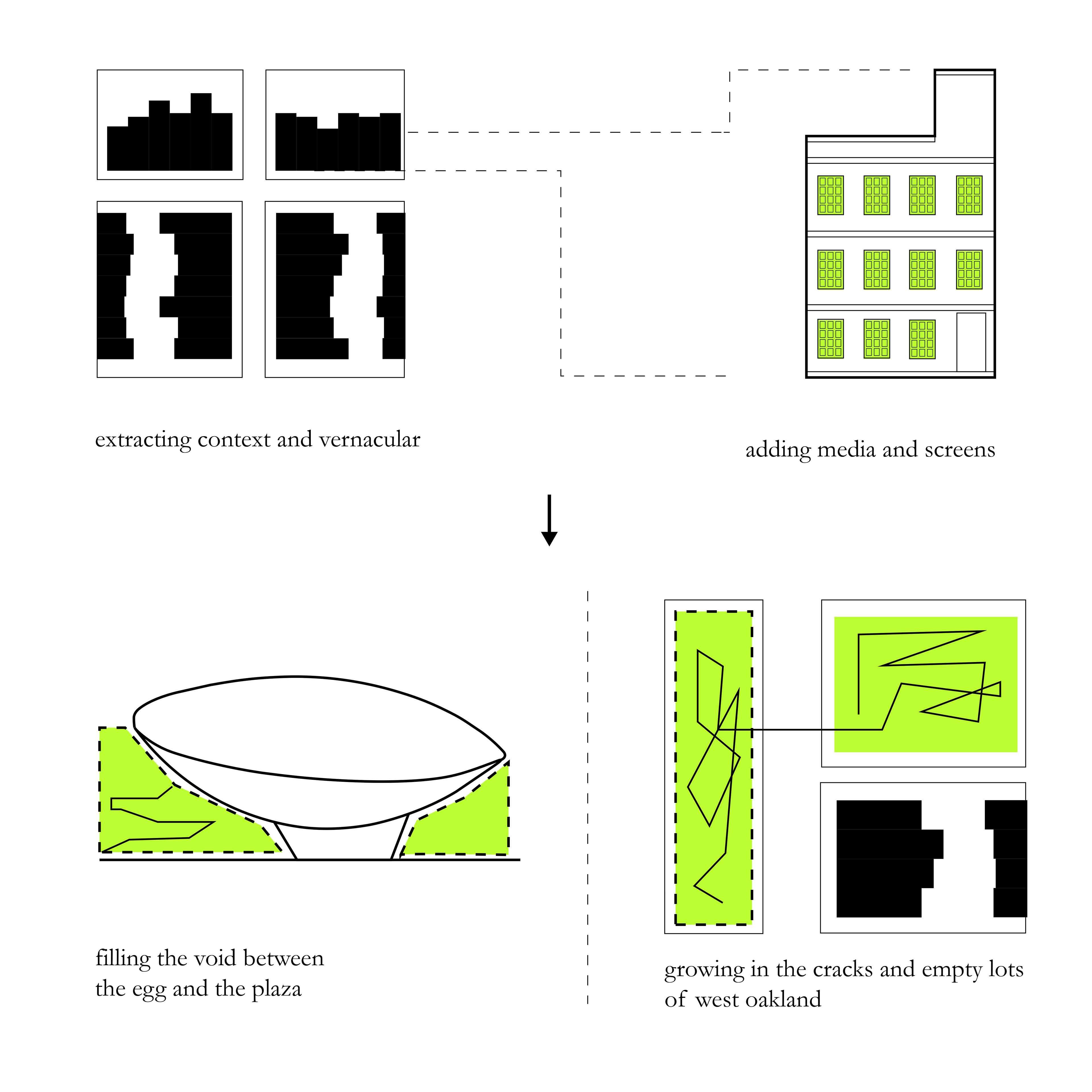
diagrams exploring the playing out of the plurivernacular onto the sites of empire state plaza, albany, and oakland, california.

